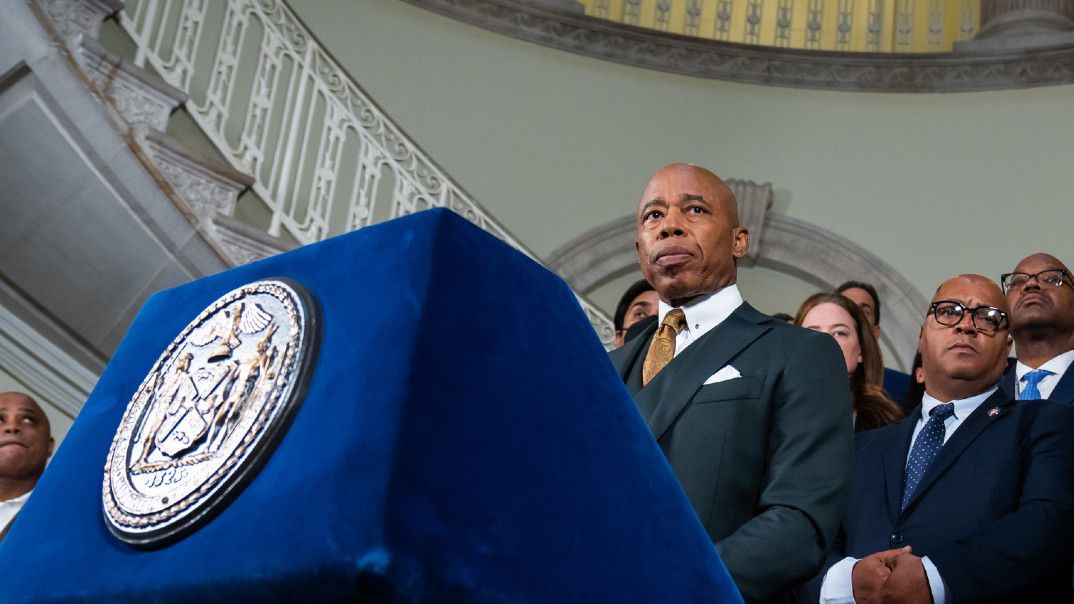Poor training, insufficient staffing and a disorganized process for maintaining key subway technology kept the MTA from quickly fixing a malfunctioning security camera system at several stations that failed to capture the aftermath of a mass shooting on a Brooklyn train this past April, according to a new report.
The report found that it took the MTA a full day to realize that security cameras at three stations along the N line were not providing live footage — including at the Sunset Park station where riders poured out of the train in the immediate aftermath of the shooting.
Despite four separate teams of technicians attempting to repair the problem, the cameras remained off on the morning of the shooting - four days after they first went down.
The reason for the cameras malfunctioning “remains unknown,” according to the report, which was released Thursday by the MTA’s Office of the Inspector General.
The report comes eight months after the shooting, which left dozens of people injured, including 10 wounded by gunshots, after Frank James, 62, opened fire on a morning rush hour train as it passed through Sunset Park.
The MTA captured images of James from separate cameras, which it provided to the NYPD, but failed to capture him exiting the subway system. James was not apprehended until the following afternoon, when several people in Manhattan called in tips to police about his location.
In a series of interviews with reporters Thursday, New York City Transit president Richard Davey suggested that the report showed that the agency responded efficiently, and that issues with the cameras did not hinder the manhunt to find James.
“We were capturing him before, and certainly after, the incident,” Davey said. “All in all, I think the system worked that day.”
The subway has more than 11,000 security cameras, about 5,000 of which stream footage live to MTA transit police. The city’s buses host more than 40,000 cameras — some of which captured key images of James in the aftermath of the April shooting.
The authority has spent more than $658 million in the past two decades on upgrading its security system, and plans to spend another $437 million, according to the OIG report.
Yet the system for responding to malfunctioning cameras can be disorganized, and maintenance schedules can vary wildly depending on a camera’s location, the report found. At least 80 of 470 locations in the subway system saw no preventative maintenance in 2021, according to repair logs reviewed by the report’s authors.
A little after 5 p.m. on Friday, April 8, live streams from the 25th, 36th, and 45th Street stations cut off. A technician did not perform a “health check” for the cameras until the following evening, when he noticed they weren’t providing footage to the system’s monitoring center.
That Saturday night, other technicians filed a repair ticket for the cameras’ local network — but no one saw it, the report found, because the staff looking for issues with local networks expected to be contacted directly.
Over the next several days, multiple groups of technicians and repair staff attempted to address the issues, and did not always notify other groups of their efforts, the report found.
Those efforts included two failed efforts from network technicians to repair the issue, according to the report - one the day before the shooting, and one in the evening on the day of the shooting.
The cameras resumed streaming footage on Wednesday around noon, more than 24 hours after the shooting.
Low staffing — and, in some cases, poor technical training — meant that the teams meant to monitor the different camera networks were “stretched thin,” the report concluded.
Different groups within the electronics maintenance staff had different ideas of how they were meant to communicate problems with equipment, like cameras, and even use different systems for tracking problems. Workers instead told investigators they rely on an “informal” communication system.
“The flaw with this informal system is that not everyone in the Electronics Unit seems to know that the informal system even exists,” the report states.
The MTA plans to shift maintenance scheduling and monitoring for security cameras to a new system by the end of 2023, according to the report. The MTA says it has also authorized the hiring of 40 more technicians to address short staffing.
Davey pushed back on the report’s findings, noting that more than 99% of the subway system’s cameras were working on the day of the attack.
“For those cameras that were out, specifically, we knew they were out, and we were actively troubleshooting to get them back,” Davey said. “To me, the process was working as intended.”
Davey said riders should not be concerned about security camera outages, because the system has enough “redundant” cameras to provide footage of incidents across the train lines at any given time.
“It’s not a significant public safety issue. It’s not a public safety issue at all,” Davey said. “At any one given time, there are going to be cameras that aren't working, but there are thousands and thousands of cameras that are working.”






